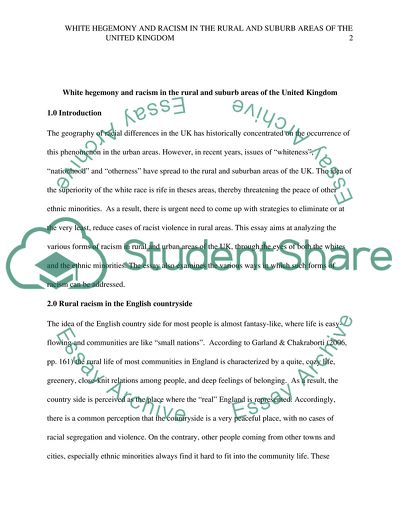Cite this document
(White Hegemony and Racism in the Rural and Suburb Areas of the United Coursework - 1, n.d.)
White Hegemony and Racism in the Rural and Suburb Areas of the United Coursework - 1. https://studentshare.org/sociology/1790144-how-do-accounts-of-rural-and-suburban-racism-challenge-understandings-of-race-and-place
White Hegemony and Racism in the Rural and Suburb Areas of the United Coursework - 1. https://studentshare.org/sociology/1790144-how-do-accounts-of-rural-and-suburban-racism-challenge-understandings-of-race-and-place
(White Hegemony and Racism in the Rural and Suburb Areas of the United Coursework - 1)
White Hegemony and Racism in the Rural and Suburb Areas of the United Coursework - 1. https://studentshare.org/sociology/1790144-how-do-accounts-of-rural-and-suburban-racism-challenge-understandings-of-race-and-place.
White Hegemony and Racism in the Rural and Suburb Areas of the United Coursework - 1. https://studentshare.org/sociology/1790144-how-do-accounts-of-rural-and-suburban-racism-challenge-understandings-of-race-and-place.
“White Hegemony and Racism in the Rural and Suburb Areas of the United Coursework - 1”. https://studentshare.org/sociology/1790144-how-do-accounts-of-rural-and-suburban-racism-challenge-understandings-of-race-and-place.


